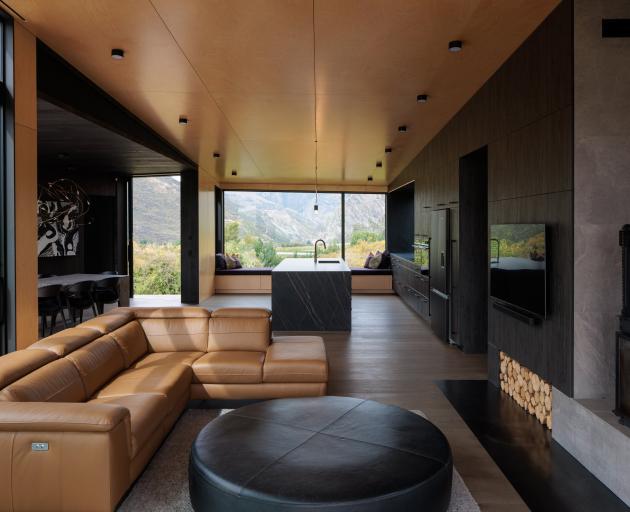The owners of this Gibbston Valley house faced major challenges even before work started.
One was getting consent to build, which hadn’t been granted when they bought the site.
Another was showing there would be minimal impact on the land, which functions as a vineyard.
Because the site is in the rural Gibbston character zone of the Queenstown Lakes district plan, there was concern about the building being seen from public areas and about the loss of viable vineyard to housing.
The owners, a semi-retired couple from Auckland, had to obtain the consent of neighbours and ensure the house would be recessive in the landscape.
Cautious about the potential for reverse-sensitivity noise complaints, the planners required acoustic separation in the external walls and windows, especially those facing frost fans.
The owners also agreed to plant new vines to offset those that were removed to make way for the house.
Architect Anna-Marie Chin said the challenge was for the holiday home to "sit quietly" within the working vineyard.

The reddish-brown exterior is already a similar colour to the vines but the patina that will develop over time will further reduce the home’s impact.
While the owners bought the land knowing there was no consent for a building, the due diligence period gave them time to obtain one prior to settlement.
Their brief called for a contemporary, low-maintenance home that they could enjoy as a couple or with their extended family.
The 230sqm building, which recently won a southern architecture award, comprises two "boxes" that cross over to form a T-shaped plan. The layout maximises the views of Nevis Bluff and the Remarkables mountain range. It also allows the sun into different areas at different times of the day and provides shelter from prevailing winds.
Connection to the land varies. At one end, the house sits off the ground with a view from a window seat to the rocky outcrop of Nevis Bluff. At the other end, the living area and deck are closer to the vines and feel more protected.
A mix of timber and dark, textured timber-look melamine form the "spine" for the living space and rafters in that area provide additional height.
The climate in the area can be harsh, with hot, dry days in summer and sub-zero temperatures in winter. To counter this, there are thermally-broken window frames and high insulation values throughout. A large sliding screen reduces overheating along the western facade.

If a big snowfall disrupts the power supply, woodburners in the living area and on the outside deck can be used for cooking and heating.
Single-storey with a low-slung roof-line, the house sits easily on the land.
While conditions were imposed on the build, the owners wanted to be sensitive to the environment regardless, Chin said.
"It’s a working vineyard and that’s one reason they bought it. They liked the land, they liked the vines and they liked the location."
Local residents seemed to be in support of the house, she added.
"During the resource consent process, the clients got to know many of their neighbours and now they have become part of the community."



















